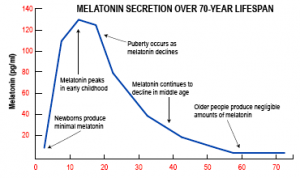Longevity research has done a lot of experiments, but can longevity research make us age slower?
This year an 800-page summary was published of all the longevity research that has been going on. A review of this research is in this abbreviated article. In the following I like to address some of the problems of anti-aging or longevity research.
Telomere lengthening
We know that people with longer telomeres live longer than people with short telomeres. When telomeres are longer, the cells can continue to divide and function normally. When telomeres shorten there comes a point when no more cell division is possible. At this point the cell will normally be dissolved. When it persists, there is the danger that it undergoes a malignant transformation. This can cause premature deaths. On the other hand, if enough shortened telomeres accumulate in various organs, organ failure ensues. This will also result in premature deaths.
Research in humans has shown that increased physical activity elongate telomeres. So do vitamin C, E, vitamin D3 supplementation and resveratrol. A Mediterranean diet and marine omega-3 fatty acid supplementation elongate telomeres as well. In addition higher fiber intake, bioidentical estrogen in women and testosterone replacement in men can be effective in elongating telomeres. Finally, relaxation techniques like yoga and meditation are also elongating telomeres.
Antioxidants
Many processes lead to free radicals. Free radicals are unstable atoms that may damage cells and can cause illness and premature aging. Inflammation, the metabolism of our mitochondria, radiation exposure, industrial solvents and ozone are just some examples of what can cause free radicals in our system. If we have enough antioxidants on board, there is a balance between free radicals and antioxidants. No damage would occur then. In humans the two major antioxidants present are vitamin C and glutathione. Vitamin C comes from our food. Glutathione is produced by the liver and circulates in the blood. These two antioxidants are keeping free radicals in balance.
Anti-inflammatories
This Harvard site explains that even food can cause inflammation in us. For instance sugar, French fries, red meat and margarine cause free radicals. Anti-inflammatory foods are tomatoes, green leafy vegetables, olive oil, nuts, fatty fish, berries and fruit. A Mediterranean diet has anti-inflammatory qualities. There are 6 anti-inflammatory supplements that are useful to know about: ginger, fish oil, alpha-lipoic acid, curcumin, resveratrol and spirulina. In addition to the above, vitamin D3 also has anti-inflammatory effects in higher doses.
Chronic inflammation can cause cancer down the road, so it is important to prevent this by eating sufficient amounts of anti-inflammatory foods and supplements.
Genetic repairs
Spontaneous mutations of DNA, mutations of suppressor genes, oncogene activation and insufficient DNA damage response can all lead to cancer. In the past there was the hope of using chemotherapy and radiation therapy as a means to influence the outcome of cancer treatment. A reinvestigation of this concept is ongoing.
More specific treatment modalities are under investigation. When more cancer can be prevented and when it is possible to cure more cancers longevity in the population will increase. Cancer has been one of the major killers over the years.
Metformin research
Metformin has been in use for decades to prevent and treat diabetes. But beyond this it also has anti-cancer activity, it prevents Alzheimer’s, prevents cardiovascular disease and may be the first anti-aging drug. A trial to this effect is ongoing.
It makes sense that a drug that treats and prevents diabetes would be a longevity drug at the same time. The fact that it also helps to prevent cardiovascular disease and Alzheimer’s disease also makes sense. Anytime you remove a chronic disease, life expectancy improves. As a result metformin will likely receive approval as a longevity drug soon.
Mitochondrial repair
The mitochondria are small organelles in each cell. The purpose of this structure is to provide energy. In normal cells there are hundred of these organelles in each cell. In heart muscle cells, brain cells and liver cells there are thousands of mitochondria in each cell to provide energy. Muscles, nerve cells and liver cells require more energy to function properly.
Two supplements have been in use for some time to support mitochondria function.
- Co-Q10. This supplement supports mitochondrial function. It prevents heart disease, together with vit. K2 and vitamin D3 and it keeps blood vessels open.
- Pyrroloquinoline Quinone (PQQ). This supplement can increase the number of mitochondria in a cell. It can also improve their functioning. With aging we know that we are slowly losing mitochondria. It is important to know that there is a supplement that can counter the aging effect and prevent further mitochondrial loss.
Conclusion
For centuries people were hoping to live longer. Nowadays this dream seems to become a reality. But it does not happen with one magic pill. The aging process involves multiple targets that need attention. The telomere length is one factor. I listed a number of items that will elongate telomeres, like regular exercise and a Mediterranean diet. Antioxidants and anti-inflammatories are prolonging life as well. You want to preserve the function of your genes. Research is concentrating on improving gene repair.
Metformin has been found to prolong life. This molecule might be the first longevity drug. It has been in use to prevent and treat diabetes, but it also helps to prevent cardiovascular disease and Alzheimer’s disease. Two supplements help with mitochondrial repair, namely Co-Q10 and PQQ. Because life is all about energy, it is important to have well functioning mitochondria in all of your cells. When mitochondria are functioning, your body functions at its best, and you feel well.













